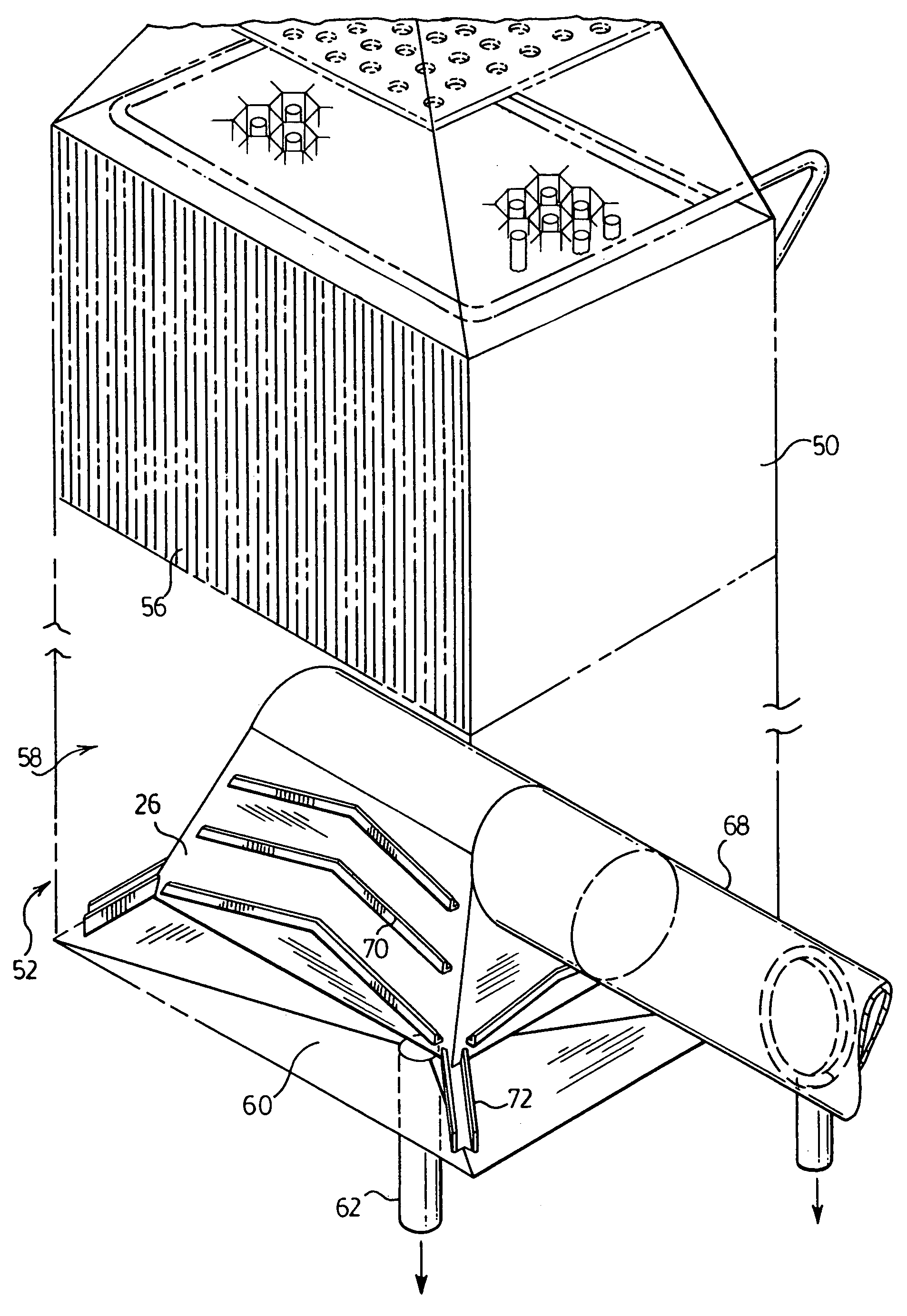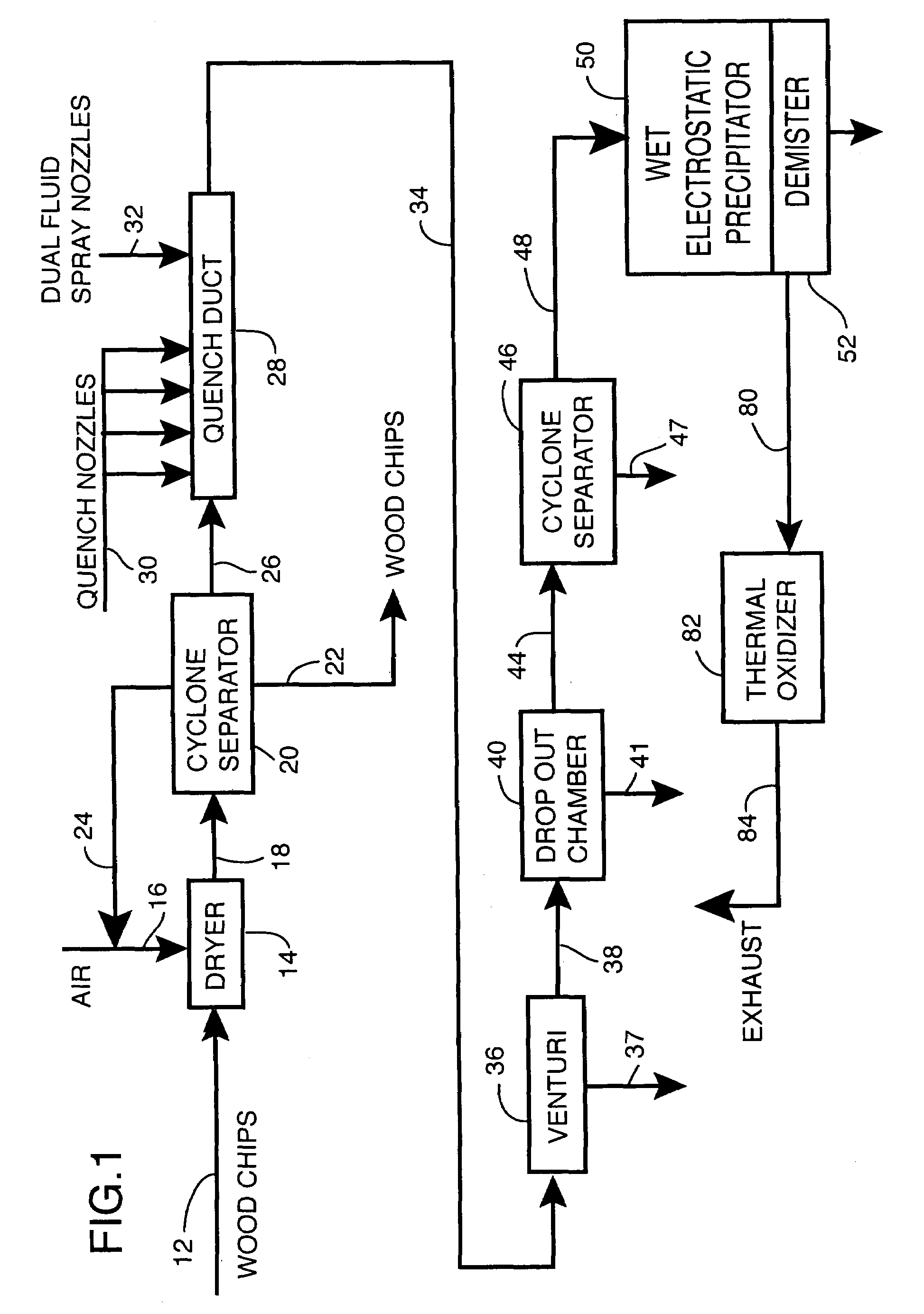Pollution control in wood products dryer
a technology for drying wood products and pollution control, applied in the direction of drying solid materials, wood particle drying, drying machines, etc., can solve the problems of poor pre-elimination, poor wet mist elimination and droplet carryover, and deterioration of media from chemical attack, so as to prolong the life of rto ceramic media, improve performance, and improve the performance of wesp performance and maintenance requirements
- Summary
- Abstract
- Description
- Claims
- Application Information
AI Technical Summary
Benefits of technology
Problems solved by technology
Method used
Image
Examples
example 1
[0061]This Example described test data from tests conducted on the modified system described above with respect to FIGS. 1 to 7.
[0062]Tests were carried out to ascertain the effects of the modifications discussed above to the efficiency of removal of contaminants from the air stream from the dryer. The results obtained are depicted in FIGS. 8 to 10.
[0063]FIG. 8 shows the effect of air pressure at the dual-fluid spray nozzle on outlet particulate loading from the mist eliminator hood.
[0064]FIG. 9 shows the combined effect of the use of the dual-fluid spray nozzle in combination with the conventional TR set and the high frequency T / R set.
[0065]FIG. 10 shows the effect of the air pressure on percent reduction of outlet particulate loading.
[0066]Overall, there was achieved over 80% removal of organic and inorganic condensibles, up to 79% removal of particulates and over 80% removal of inorganic fraction while there was no detected moisture carry-over from the mist elimination hood.
PUM
| Property | Measurement | Unit |
|---|---|---|
| Sauter size distribution | aaaaa | aaaaa |
| Sauter size distribution | aaaaa | aaaaa |
| Sauter size distribution | aaaaa | aaaaa |
Abstract
Description
Claims
Application Information
 Login to View More
Login to View More - R&D
- Intellectual Property
- Life Sciences
- Materials
- Tech Scout
- Unparalleled Data Quality
- Higher Quality Content
- 60% Fewer Hallucinations
Browse by: Latest US Patents, China's latest patents, Technical Efficacy Thesaurus, Application Domain, Technology Topic, Popular Technical Reports.
© 2025 PatSnap. All rights reserved.Legal|Privacy policy|Modern Slavery Act Transparency Statement|Sitemap|About US| Contact US: help@patsnap.com



